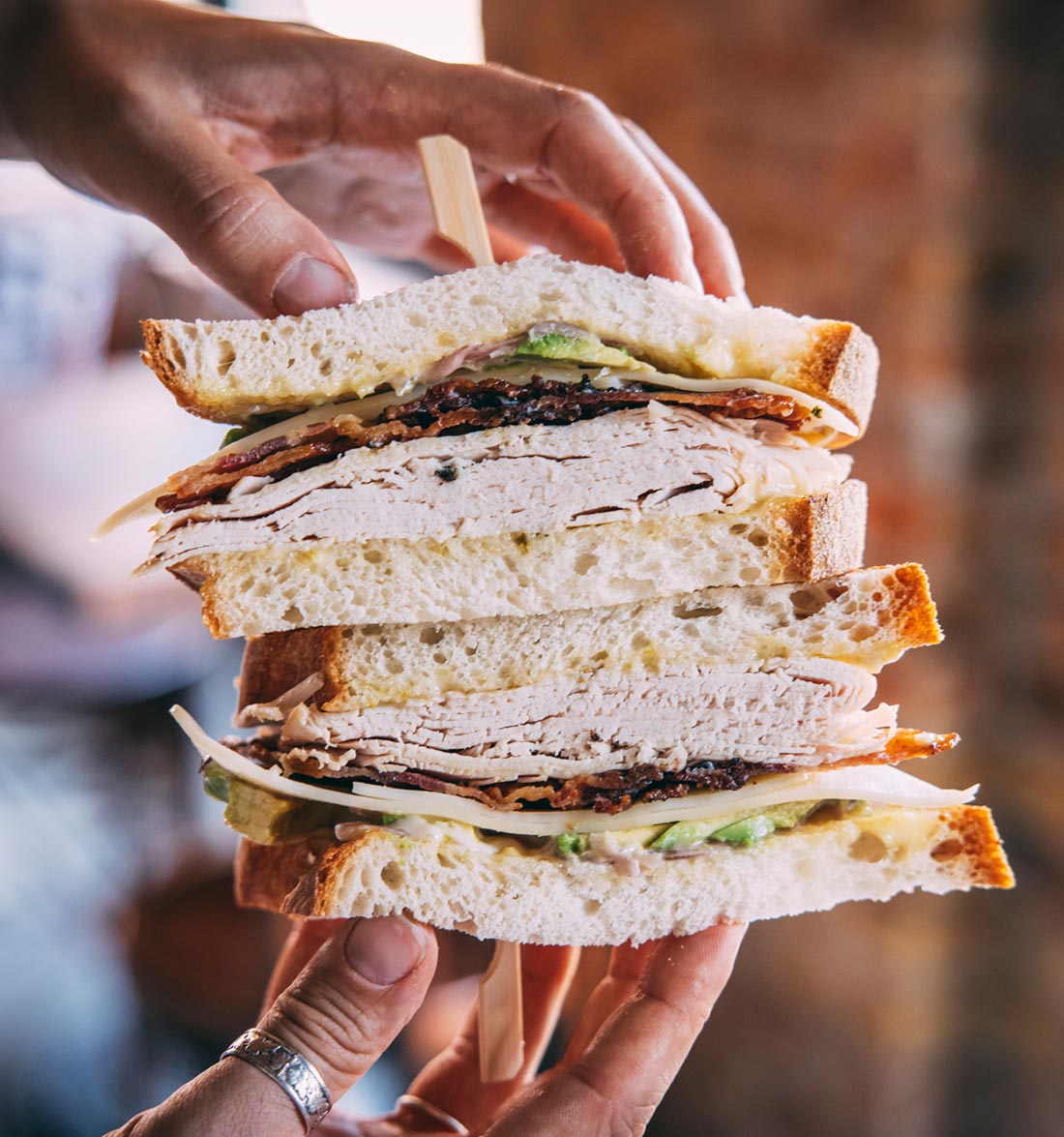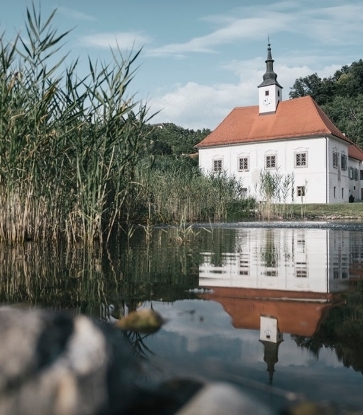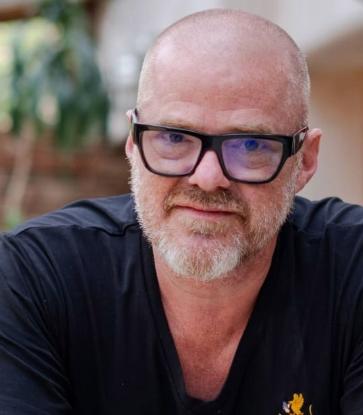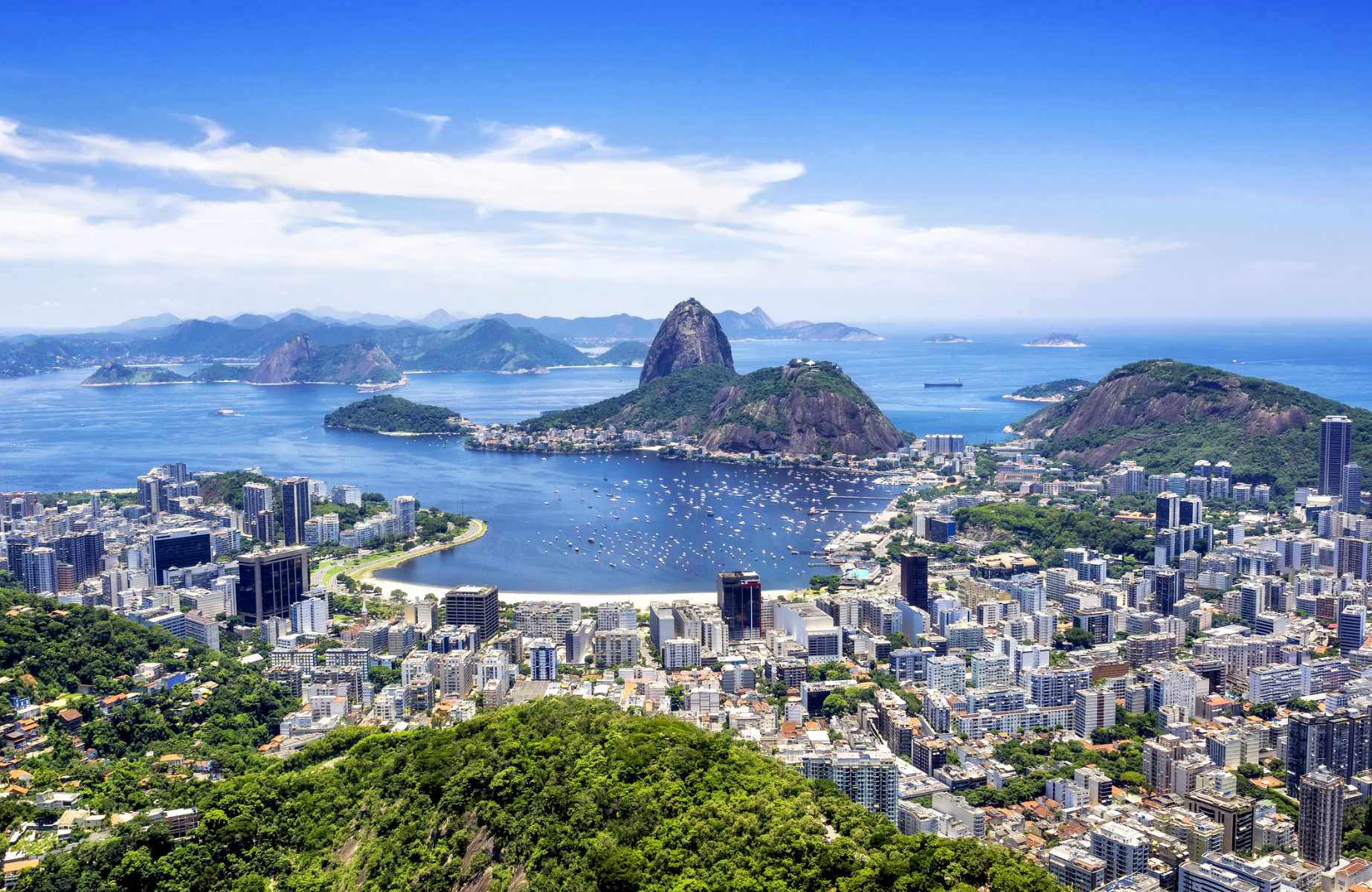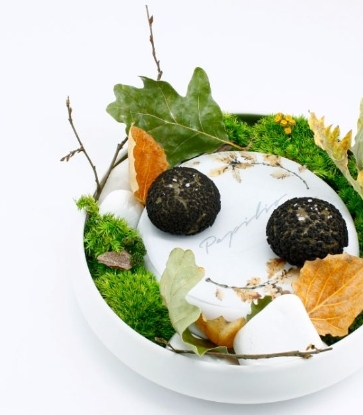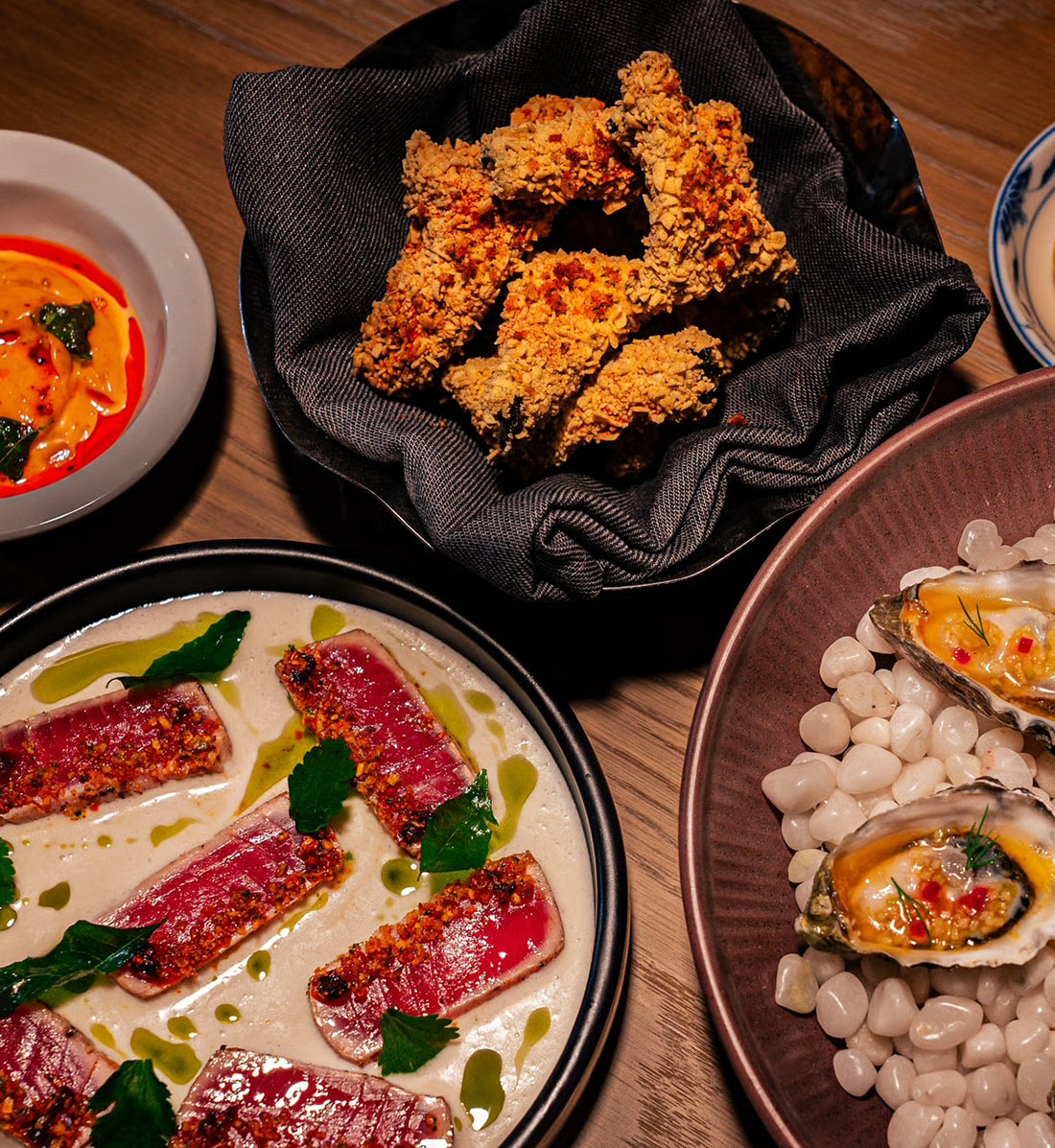The stems of the purple, green and butter yellow cauliflowers that come in from the island farms of Baldío in Mexico City are trimmed off from the vegetable each morning before service. But their lifecycle does not end in the trash. From there, the usual scrap is peeled, pureed and fermented, making its way into three different dishes on the restaurant’s menu.
Baldío, the first restaurant in Mexico City to win a MICHELIN Green Star, is a world-leader in waste reduction. Across its supply chain, from its fields to its tables, food is treasured down to its last rind and gristle. Plastic, even what a store-bought chemical agent or spice would come in, is banned. There isn’t even a garbage bin in the kitchen.
That it has achieved the feat to such public acclaim in a city like Mexico City, with its stereotype for smog and sprawl, is no anomaly. In fact, the Mexico City that Baldío represents has been this metropolis’s way of life for a millennium. Today, nearly 60 percent of Mexico City is conservation land, including the ancient acreage where Baldío grows many of its ingredients.
On a recent summer morning, Pablo Usobiaga, who opened Baldío along with his brother Lucio in 2024, gave me a tour of their farms, known as chinampas, set within the labyrinthine canal system in the south of the city, in the neighborhood of Xochimilco.
The unique agricultural method dates back more than 1,000 years, to the Aztecs and earlier, when the area where Mexico City was first settled occupied the middle of a sprawling lake. Nutrient-rich mud from the lakebed was used to build the artificial islands, whose proximity to the water made for especially fertile growing conditions.
Centuries later, as Spanish colonizers ran the city dry with poor water management practices and implemented European-style agriculture in the surrounding valley, the chinampas fell virtually out of use. Arca Tierra, an agricultural collective started by Lucio Usobiaga in 2009, alongside other traditional cooks, the city's gastronomic community, researchers and teams from the government and Mexican universities, have helped restore this kind of regenerative farming to the area.
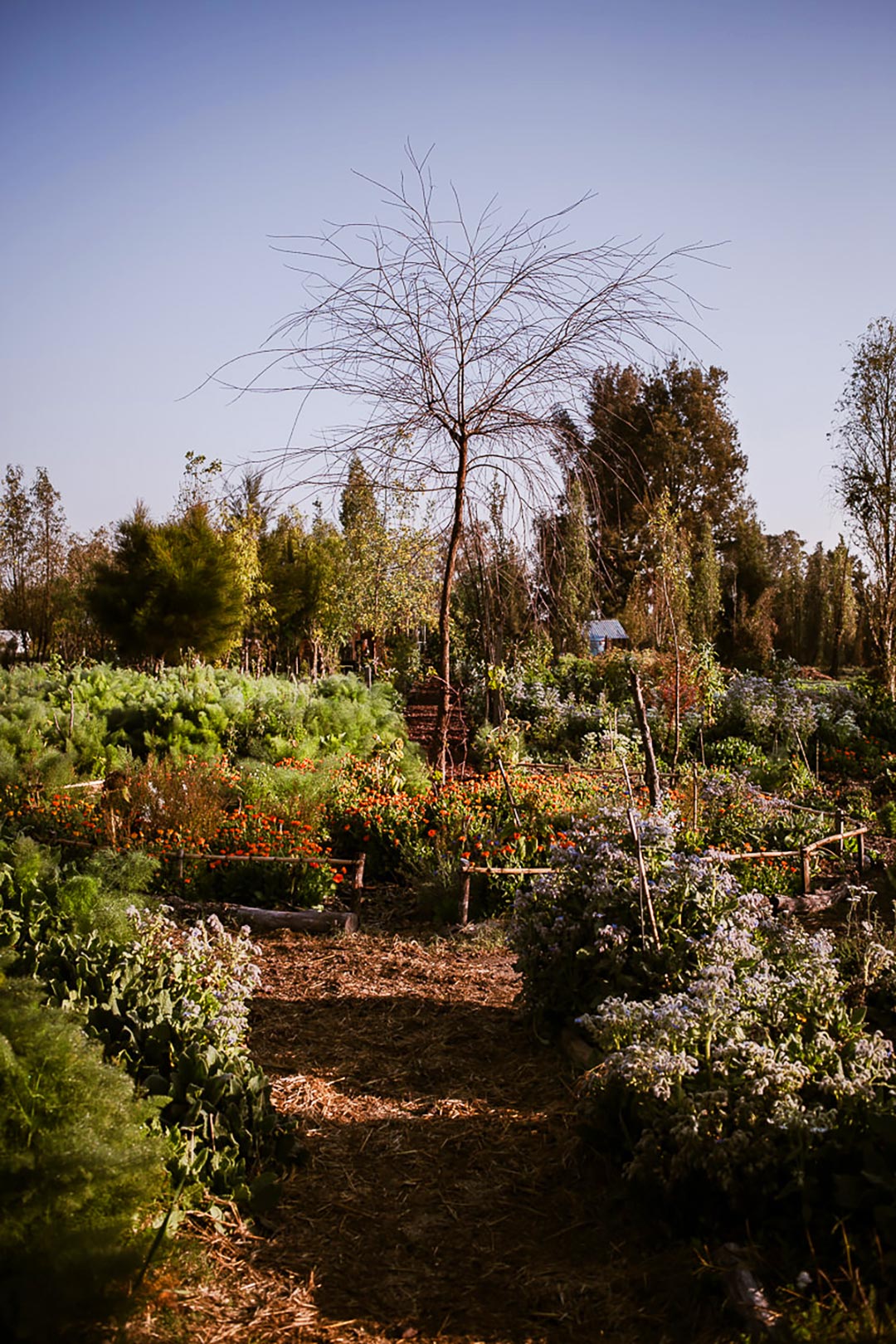
Before Baldío’s opening, Arca Tierra sold its harvest to Mexico City’s best restaurants, including Pujol (Two MICHELIN Stars) and Máximo (One MICHELIN Star), and offered tours of the canals and pop-up meals with prominent chefs. That’s what first drew Douglas McMaster, the innovative chef and owner behind London’s Silo (MICHELIN Green Star), which bills itself as the world’s first zero-waste restaurant, to the chinampas.
Inspired by the superlative sustainability he observed, McMaster met with Pablo Usobiaga for an early coffee one morning in 2024 and they laid the first plans for Baldío. Neither had been planning to open a restaurant any time soon, but the opportunity to combine their expertise to send a message about climate change felt fated.
“Each one of us can make a big difference, and if many of us come together and build a community, it's the only way to stop what's happening,” Usobiaga said in an interview.
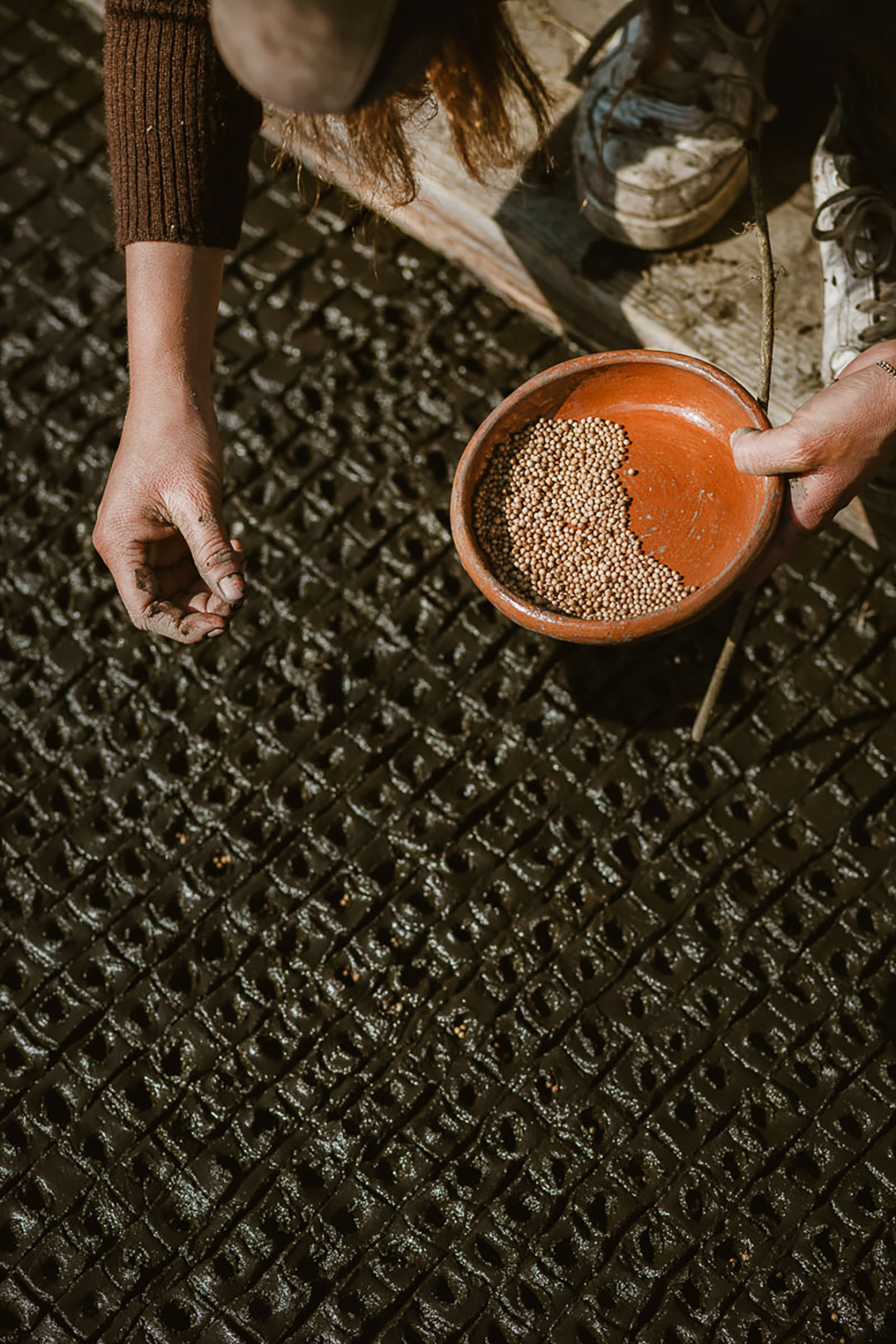
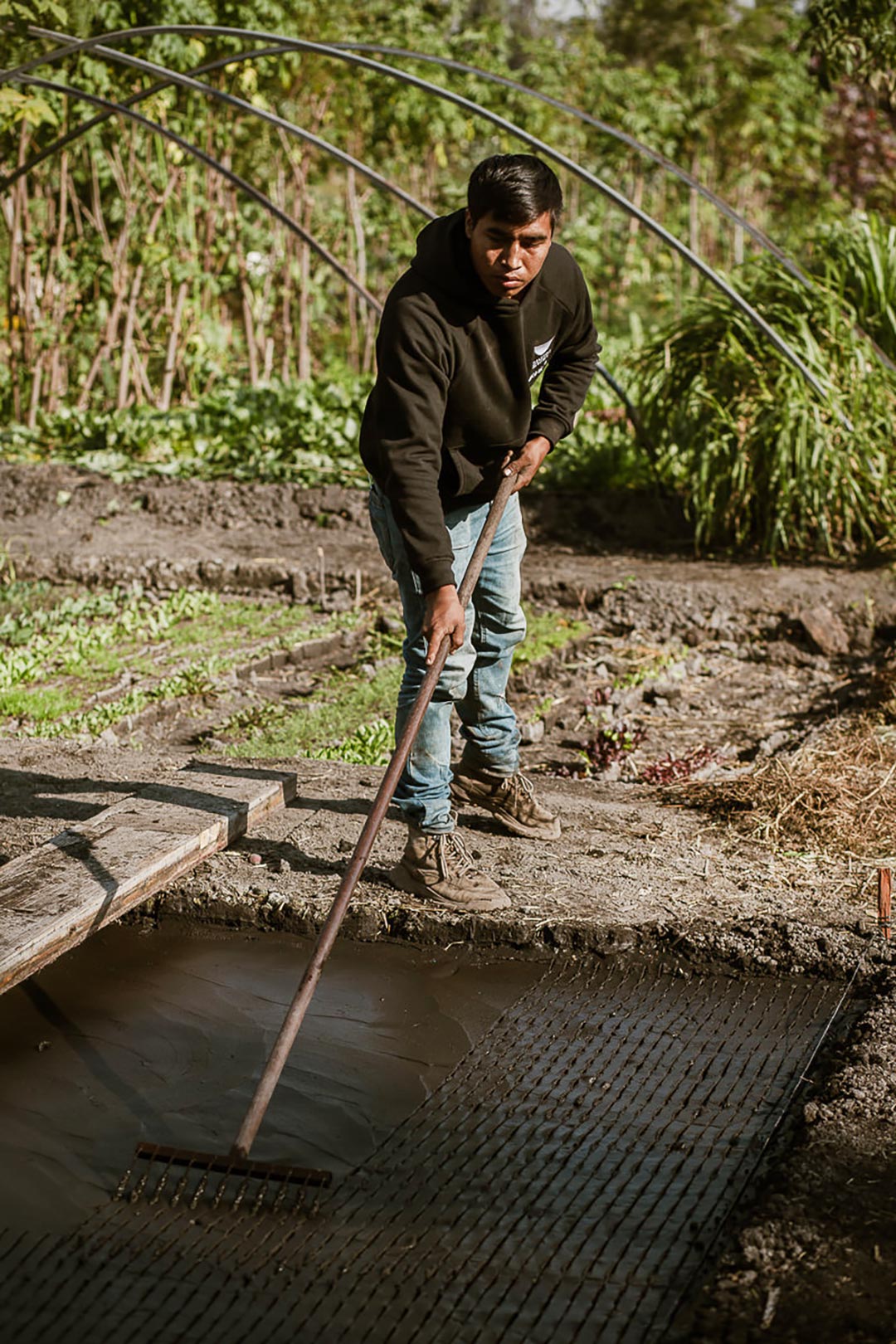
After a forty minute ride through the serene Xochimilco canals, propelled in a covered wooden gondola by two young men with oars double their height, we reach Arca Tierra’s main chinampa, one of 12 where more than 100 types of plants grow in lush tangles. With us on the tour is Daniel Vidal, Baldío’s lead service chef, who comes here weekly to trade menu notes with the farm team and sample what’s fresh.
The field is bursting with vegetables and herbs and flowers, like the flor de maguey, a sun-colored bloom of the agave plant that the restaurant serves atop a tostada. The farm team eschews chemical pesticides and emphasizes the cross-planting of different crops – the opposite of typical monoculture farming – which makes for healthier and longer-lasting soil. From inside a circle of sturdy, foot-long leaves, Vidal plucks out a cauliflower the size of a bowling ball, long stalk and all.

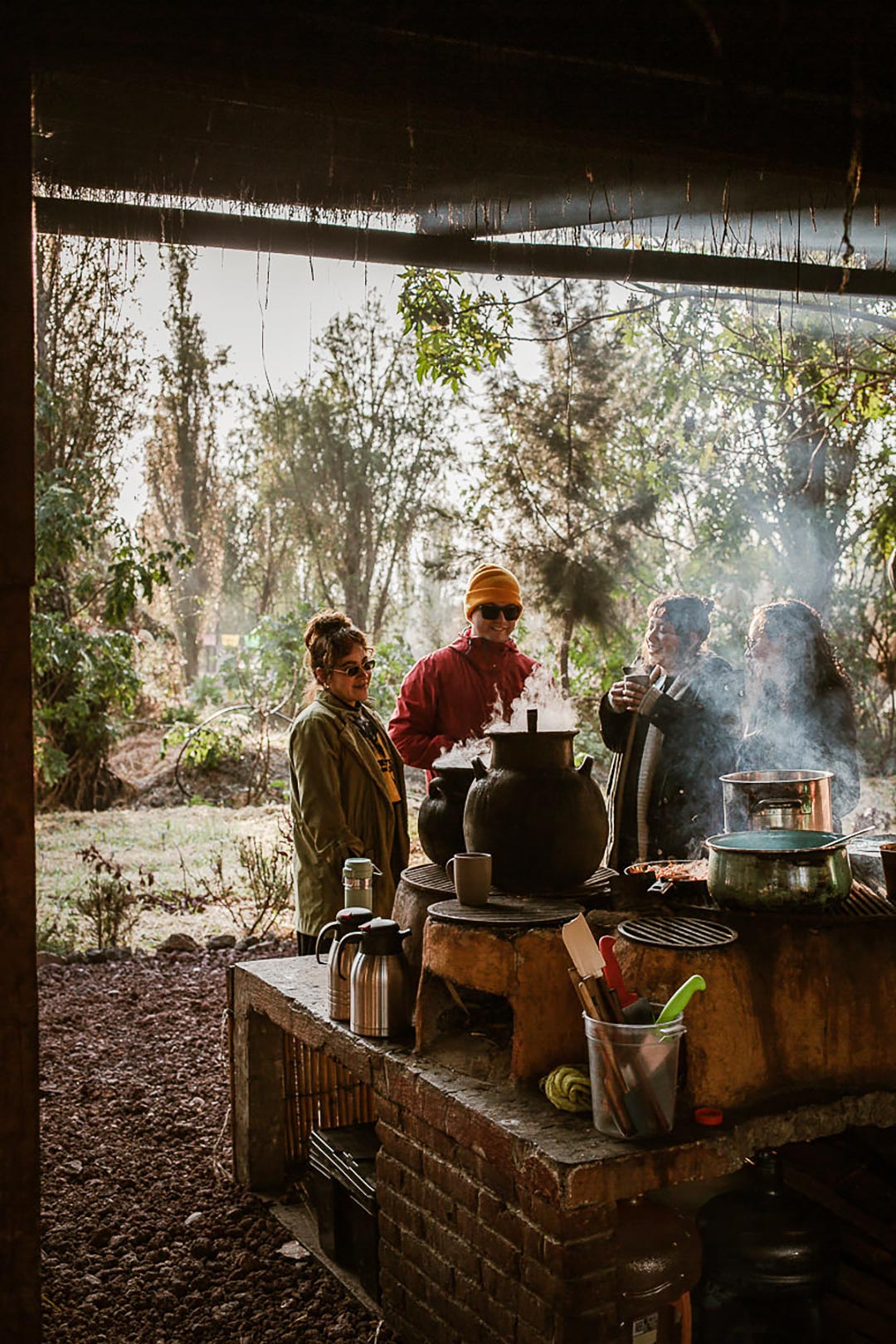

Sourcing all their produce from here is the first step in the Herculean effort underpinning Baldío’s zero-waste ethos. By growing their own ingredients, they cut out the middlemen who could create waste with bags and packaging and other single-use plastics.
After workers harvest the fresh bounty on hand at Arca Tierra, it’s transported by kayaks and canoes through the canals to diesel trucks that will drive it to the group’s production center and prep kitchen back in the city center. (Mexico doesn’t yet have the infrastructure to accommodate electric trucks, Usobiaga lamented.)
A rotating team of chefs and bar staff from the restaurant arrive in the warehouse early each morning to ready the day’s dishes and concoct the potions that any food waste is converted into. A Chilean chef on our tour in town to learn about Baldío’s techniques likens the space to Willy Wonka’s chocolate factory.
In a pantry off the main kitchen – the fermentation area – small ovens line the walls alongside jugs and bins filled with leftovers in various bubbling states. The team deploys koji, the same mold used for centuries to convert rice into sake and soybeans into soy sauce, to create all their umami-packed shoyus and garums and vinegars.
“Everything we make here is essentially sake of another flavor or soy sauce of another flavor. It’s like their distant cousins,” Vidal said. “The most important part of Baldío is the fermentation. None of this comes from saying, ‘I grabbed some lemons, I cut them up, I’m going to do this,’ but rather it’s a result of how to take advantage of the waste we have.”
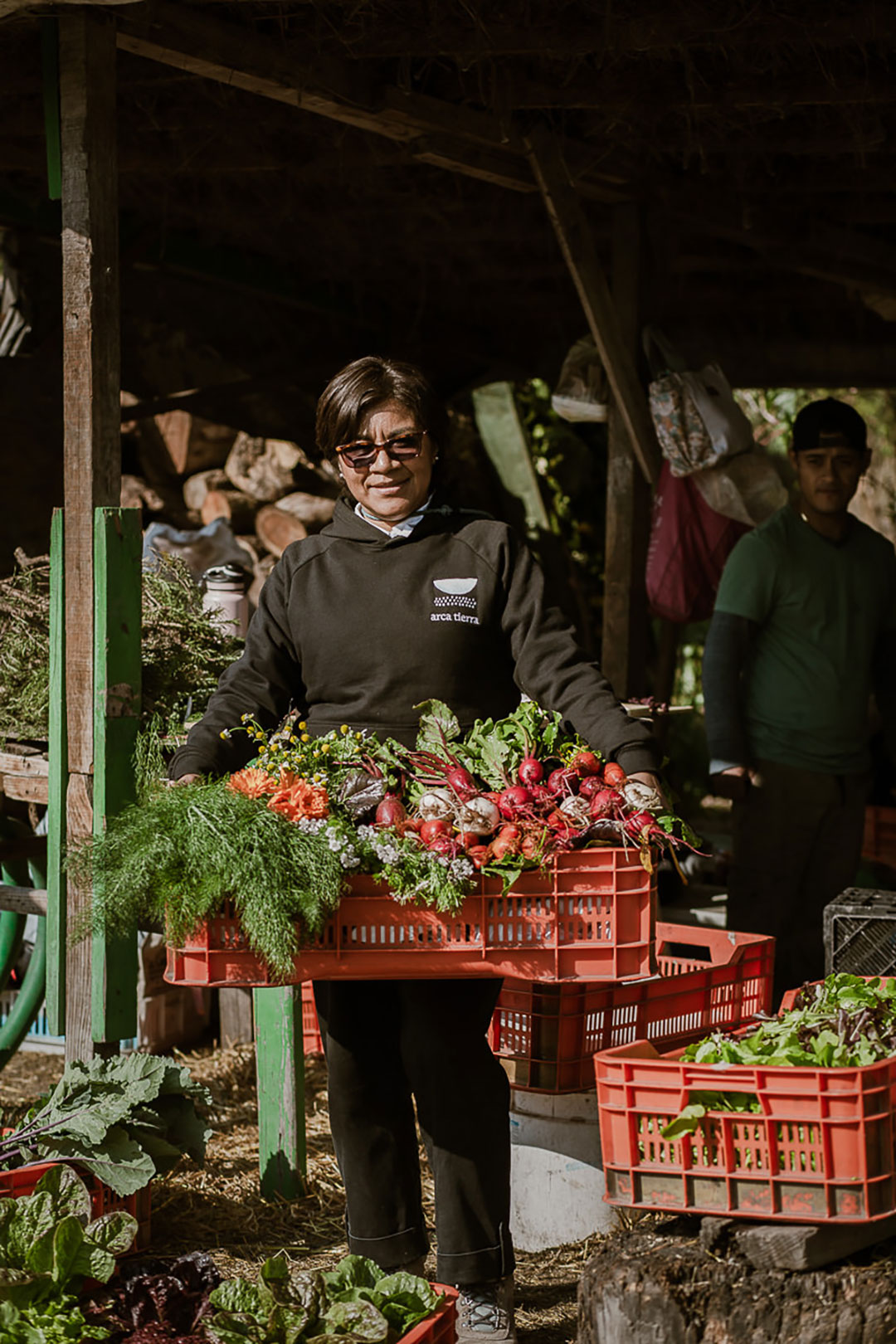
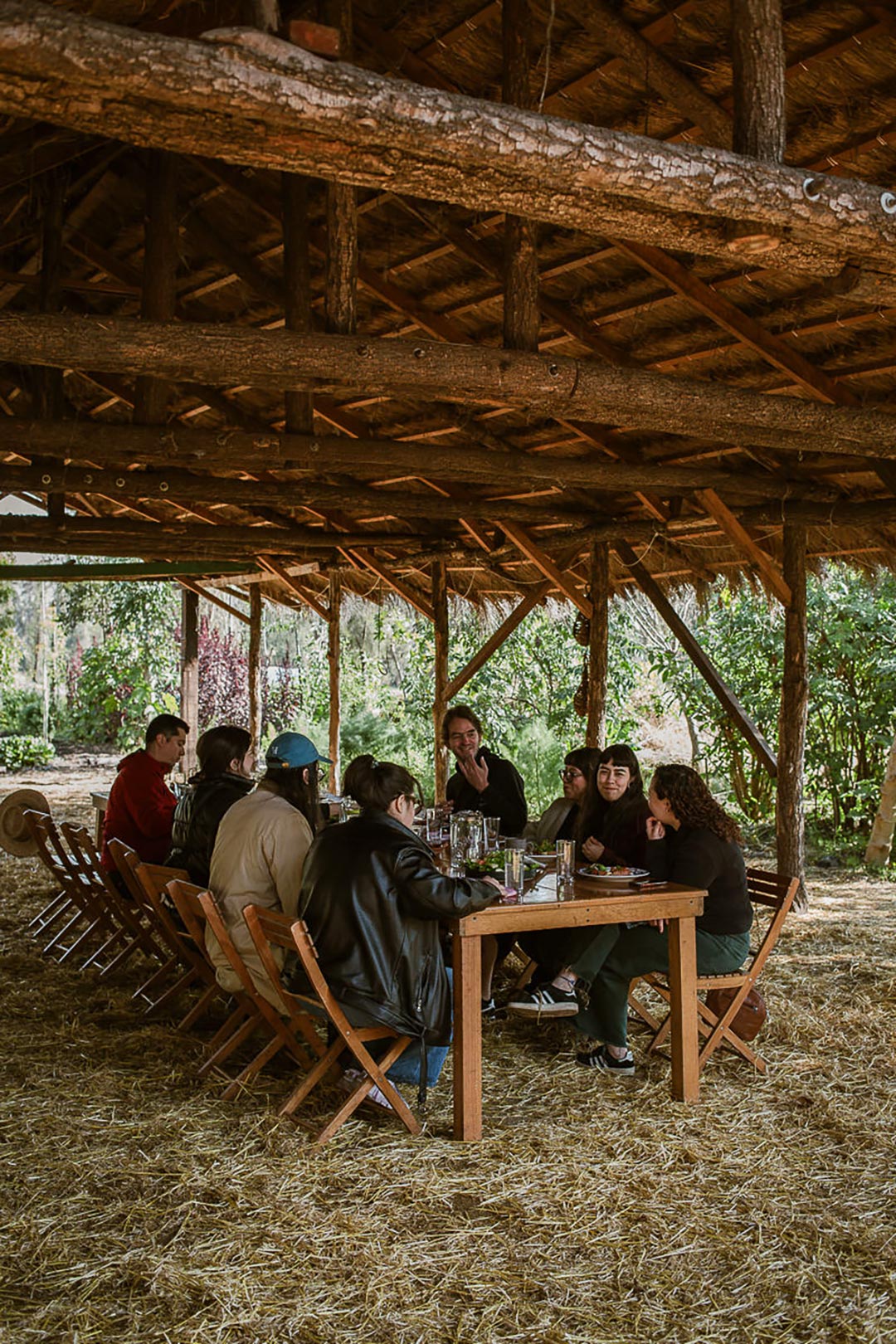
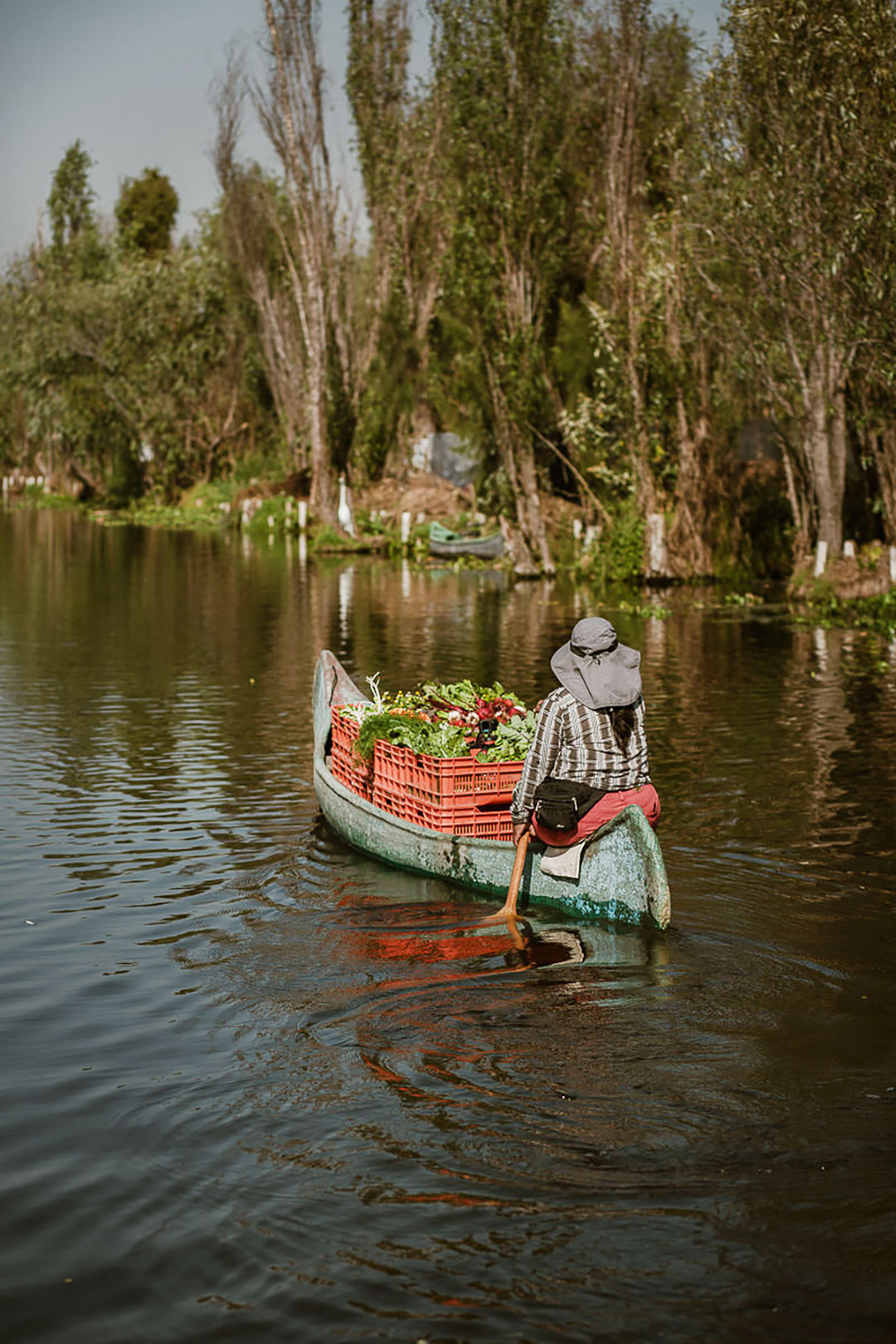
Like the cauliflower stems, which, after they’re harvested, will be cleaned, roasted, mixed with water and koji, caramelized in the oven and then frozen and filtered out as a shoyu.
The stems will also be fermented into a kimchi that’s served with a pork head taco dish and pureed for a guacamole that goes on a tostada. The cauliflower stem shoyu will be used to season a showstopping course of chinampa broccoli and cauliflower served off the grill over a base of verdant pipián sauce.
At the handsome restaurant in the buzzy neighborhood of Condesa a few days later, I try the finished cauliflower dish at last. The small florets come beautifully charred in a ring on a hammered copper plate. In the middle is a spoonful of black garlic puree that packs a wallop – a result of its four weeks in the hot fridge.
Together, a bite is luscious and smoky and bright, as flavorful and interesting as the humble cauliflower could ever hope to be. As I chew, I search my palate for any hint of the shoyu, the drops of clear liquid that amount to all this restaurant stands for. There’s nothing to notice – nothing that sticks out – but surely it’s behind the sensation that sends my eyebrows up in delight.
Vidal had forewarned me of this effect of the shoyu on our earlier visit: “When you go to Baldío, you’re going to have the thought, ‘Why does this taste better or richer?’” he said. “It’s like adding a certain kind of salt or seasoning, our special sauce.”
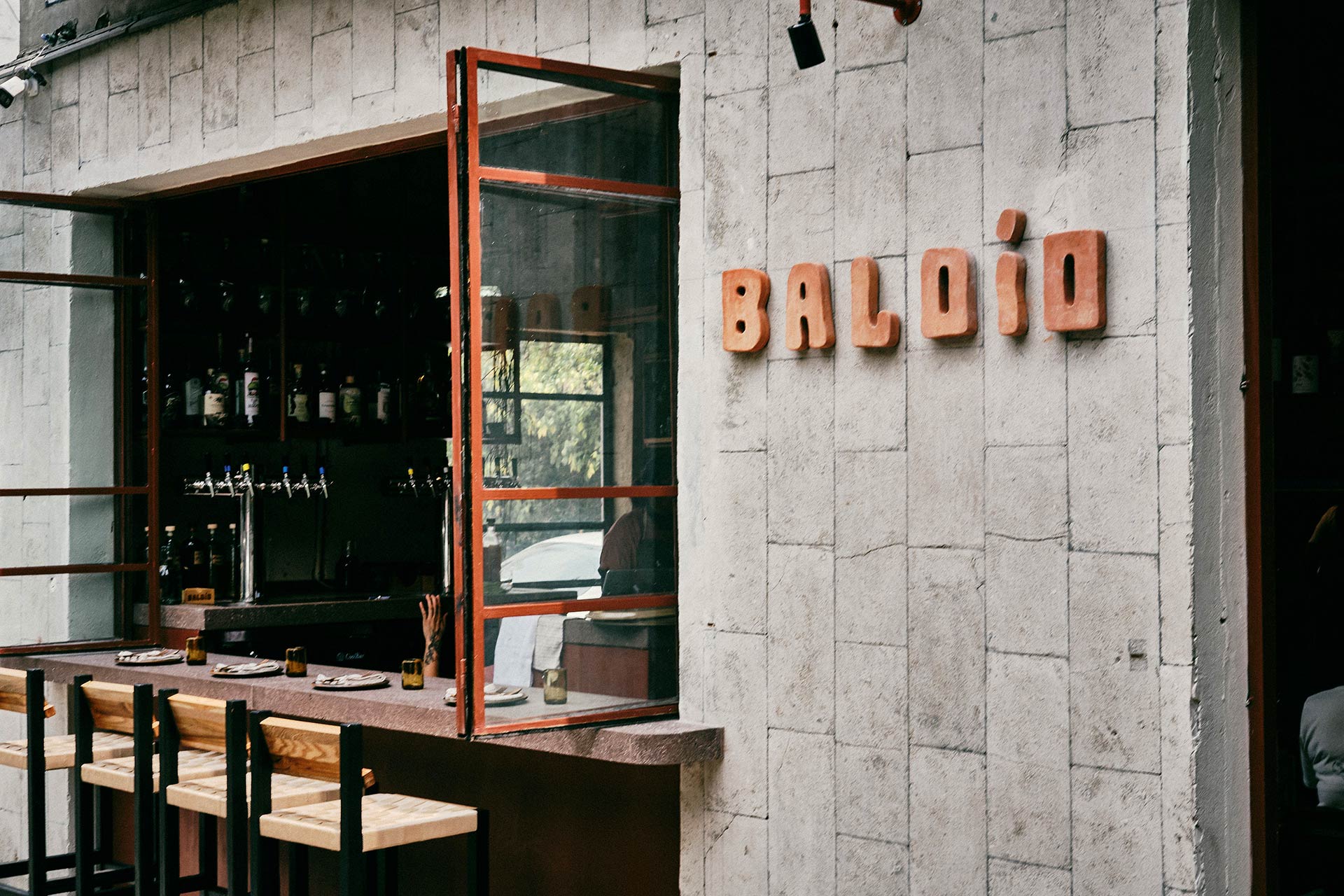
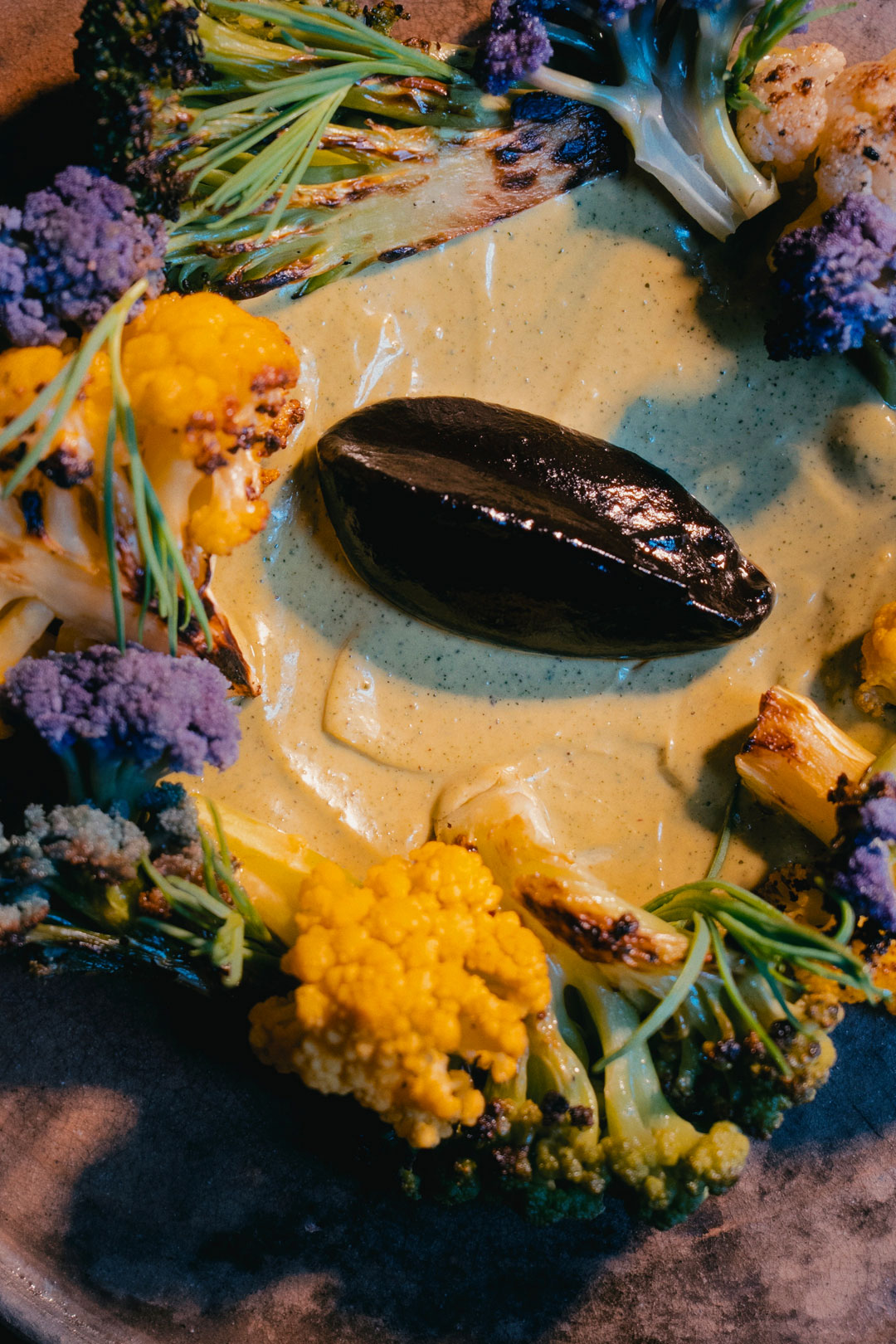

Hero image: Fernando de los Monteros / Vegetales chinamperos




